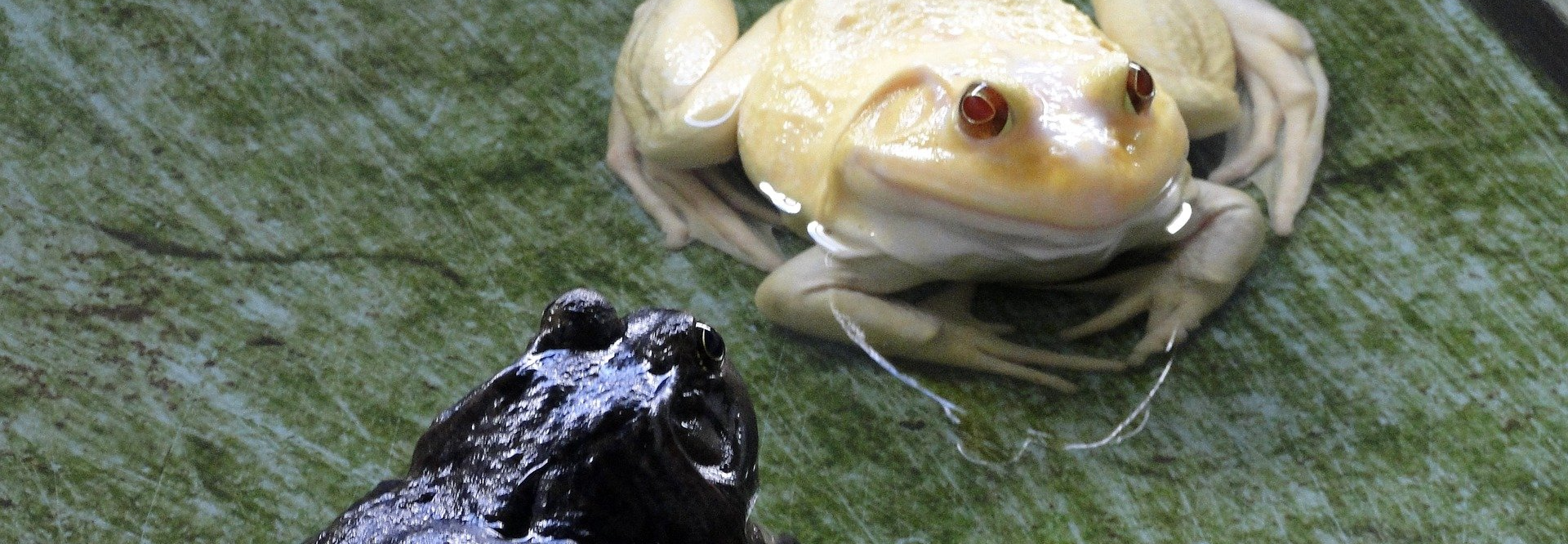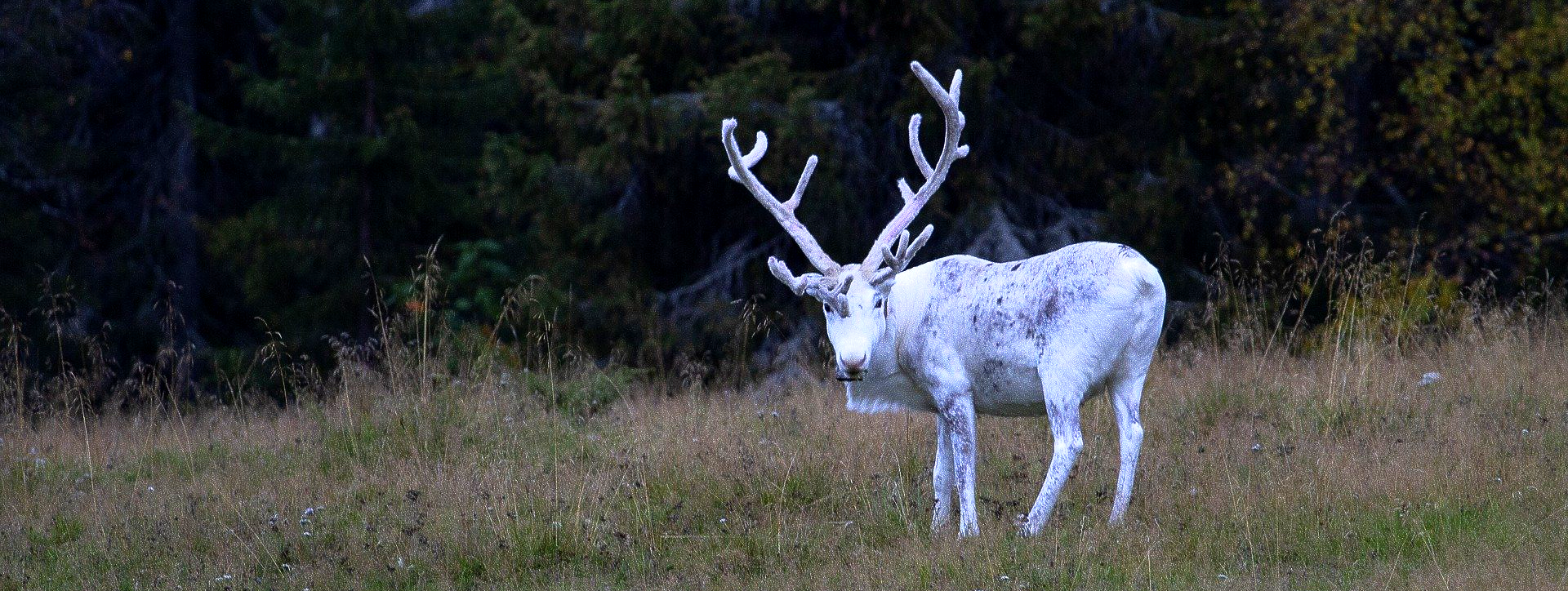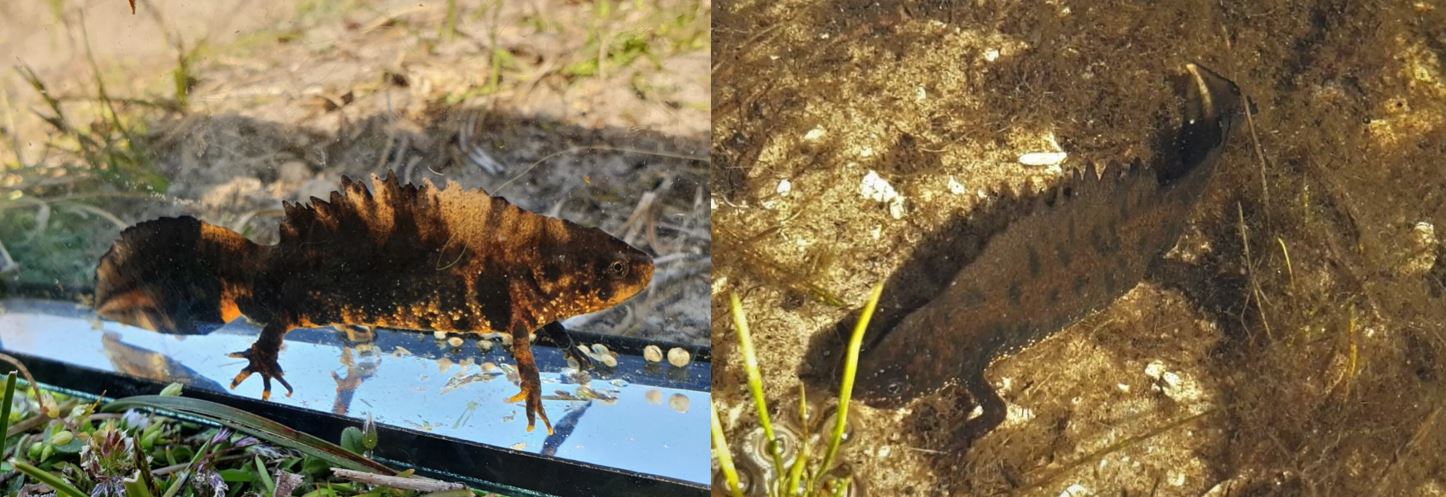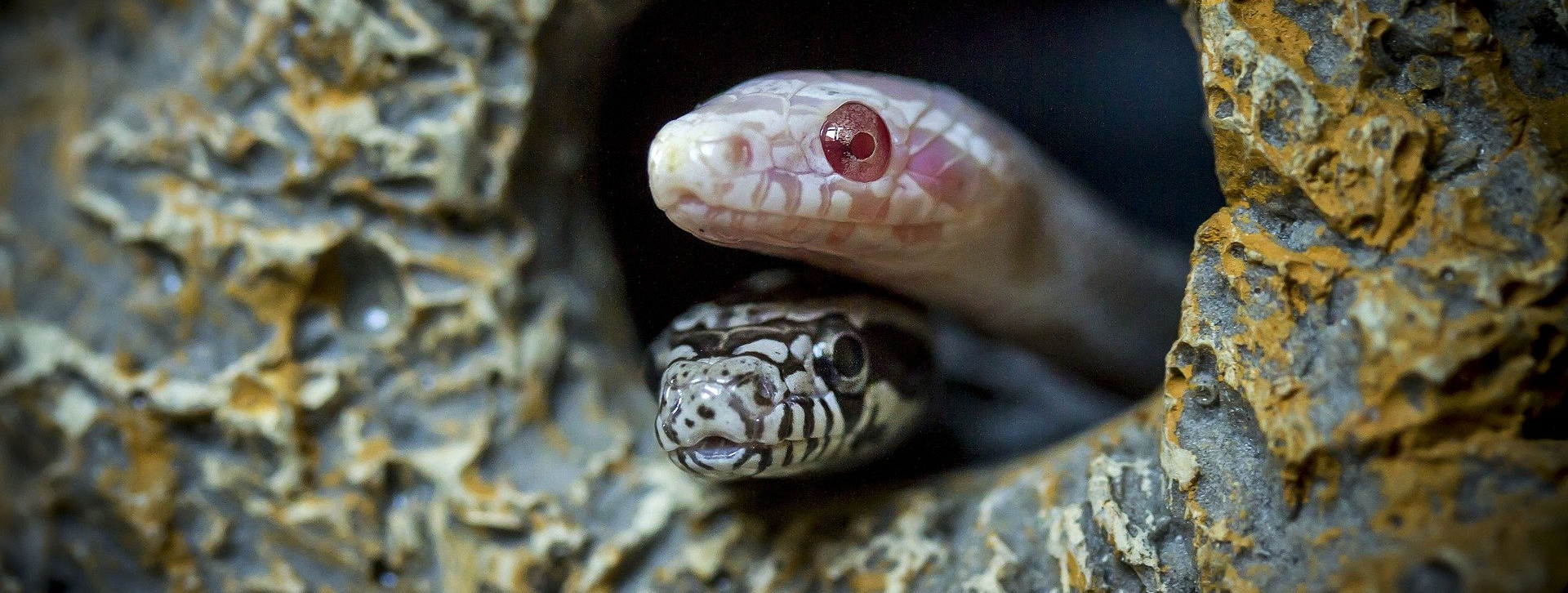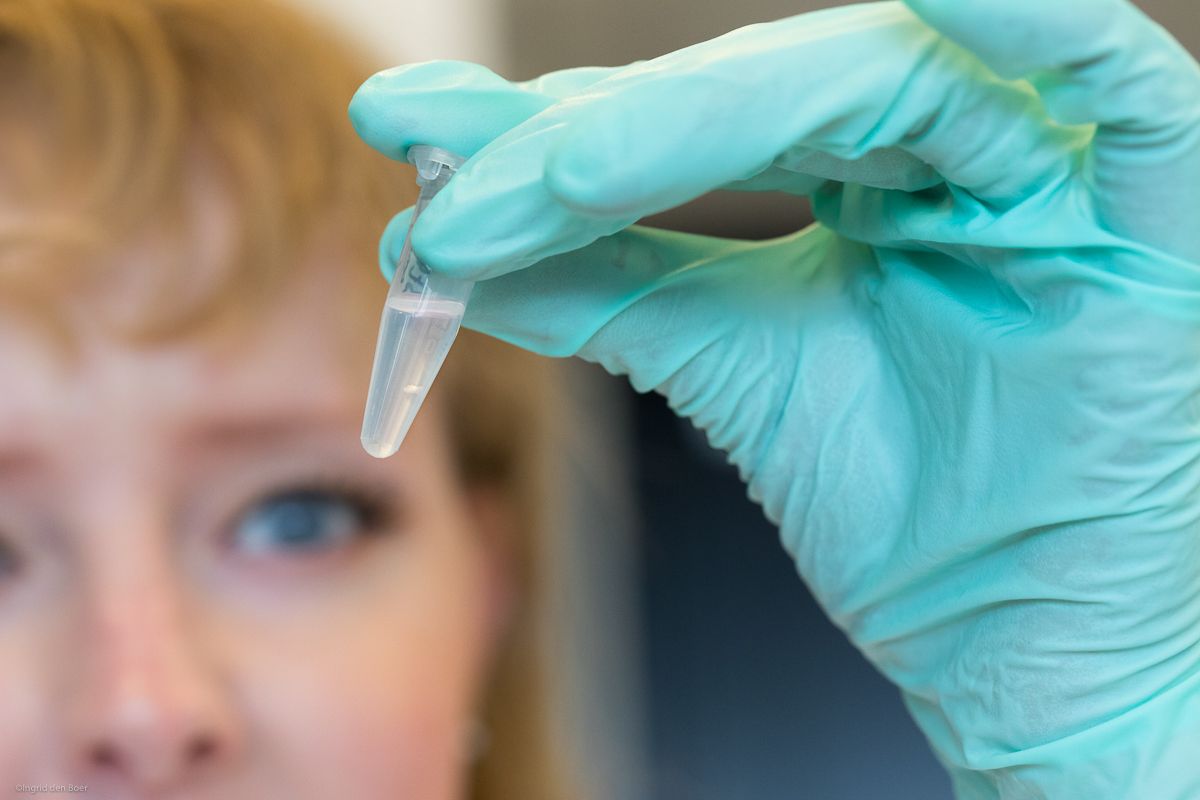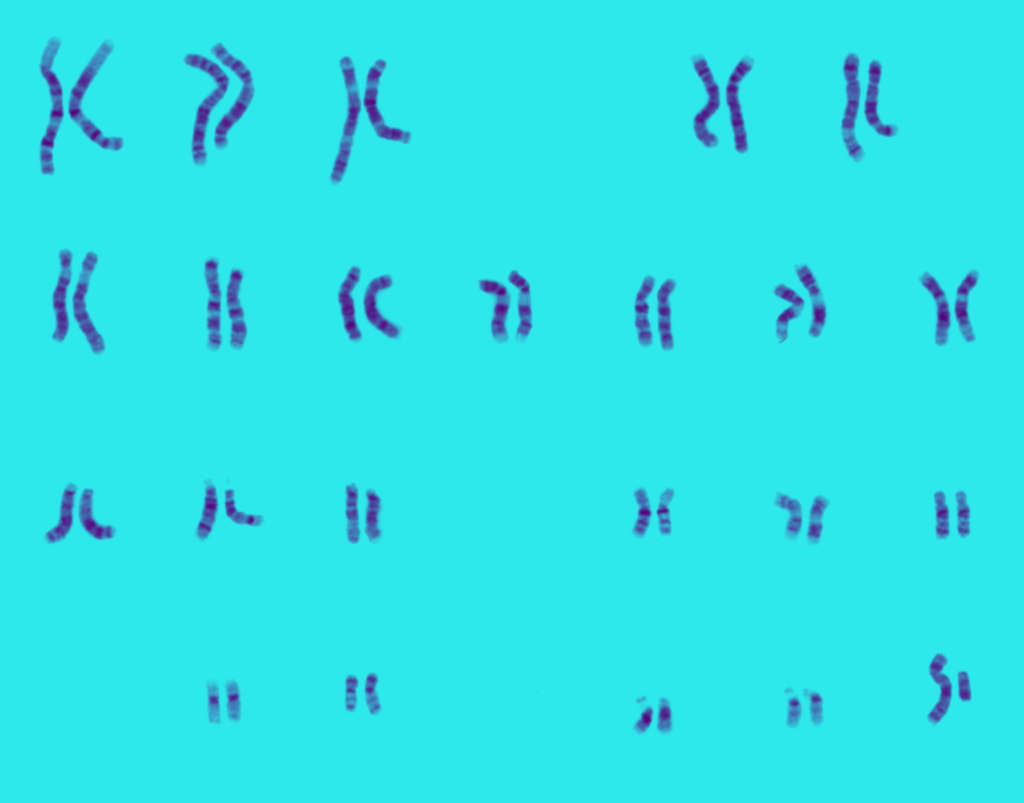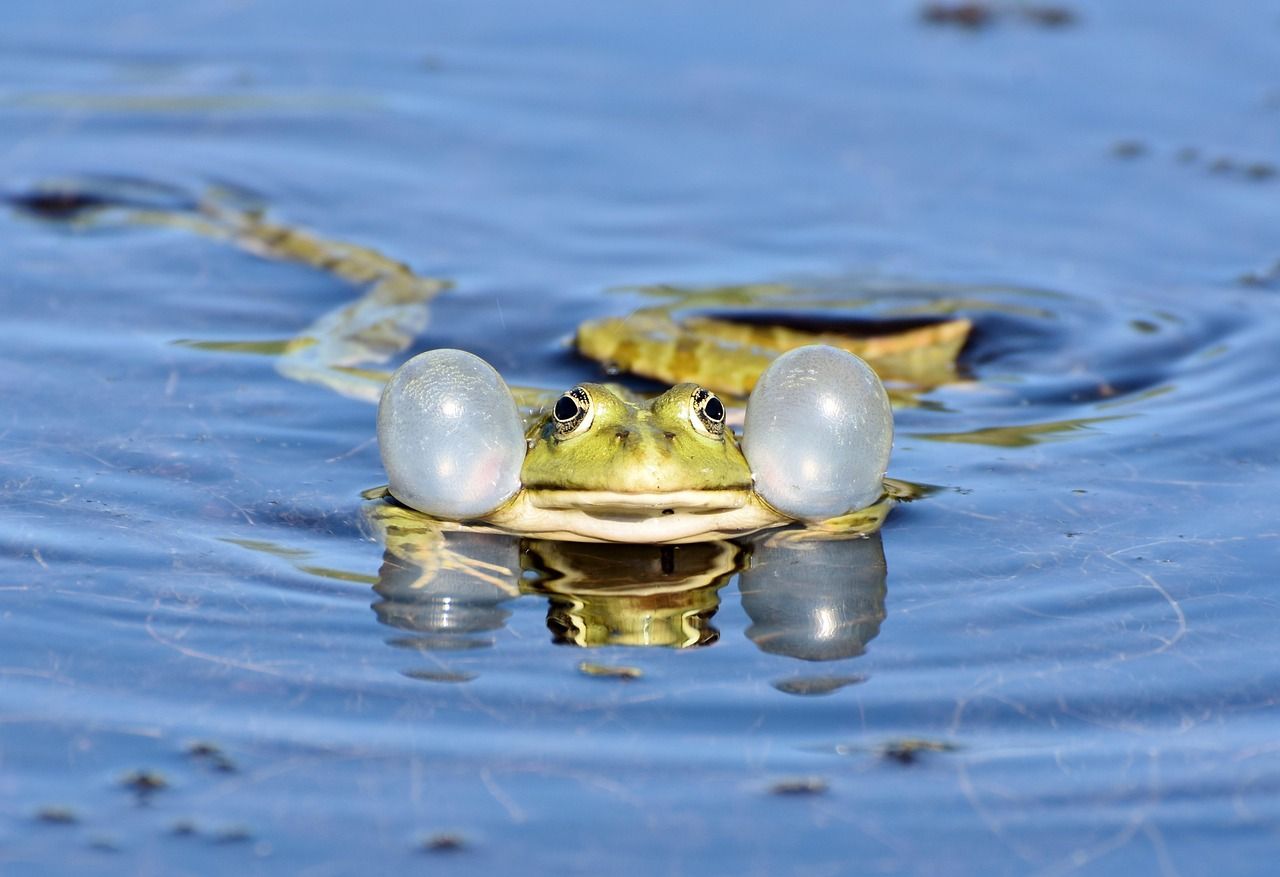Colorful genes: coloring outside the lines
(Blog alleen in het Engels)
2 nov, 2021
My colleagues and I were looking for salamanders during our fieldwork when we came across a
great crested newt with an abnormal color pattern. How cool! Bas Helder, a bachelor’s student within our team, caught the individual with a dipping net. The newt is believed to exhibit a ‘partial flavistic’ color variation: the words are almost as difficult as the discovery is rare… Perhaps I am going too fast, so stick with me and let me take you a few steps back to explain.
Animals can have many beautiful colors. Each species has their own color pattern, which can vary in brightness, in design, in shade, and so on. Most of the time, a certain color pattern is characteristic of a species. But sometimes scientists like myself stumble upon specimen with extraordinary color deviations. And here it comes: there are different kinds of such abnormalities, some more common than others.
So, what type of color deviations exist in nature?
Albinism
Albinism is the most described color deviation. It is caused by a lack of the pigment ‘melanin’, which makes up the color of skin, fur, feathers and eyes. This means that, generally, no colors are present in the skin or fur at all, which therefore appear white. The eyes of
albinos often seem red, though. This is due to the lack of color in the eye’s iris, which now causes the red blood cells in the veins and retina of the eye to become exposed! The red blood cells are still of normal color because they hold ‘hemoglobin’: an iron-containing, different kind of red pigment that is necessary to carry oxygen through the body.
Albinism is most frequently displayed by a completely white or pale skin or fur, accompanied by red eyes
Leucism
Leucism is pretty similar to albinism in the sense that it is caused by a loss of pigment in the skin, feathers and fur. However, the color of the eyes usually remains normal. Also, it regularly happens that
leucism is partial, meaning that animals are only partially white or pale and that the pattern can seem patchy. In some cases it can be difficult to distinguish albinism from leucism.
With leucistic, the whiteness is often patchy or incomplete and the eyes are of normal color
Melanism
Melanism is actually the opposite of albinism and leucism, because it means there is an excess of pigmentation which will lead to a darker, often almost black, color! It is more rare than albinism and leucism. Although albinism is, for instance, also described in humans,
melanism is not. In some cases in nature, melanism evolved because it provided better camouflage, for instance, in the pepper moth. The moths adapted to heavily polluted industrial environments, where it was beneficial to turn black. This is because they stood out less to predators as opposed to their lighter conspecifics when resting on dark-colored, dirty trees. And when the environment became more clean again, the moths regained their lighter colors. This case of so-called 'industrial melanism' is actually a text-book example of how
evolution and natural selection work, which I find pretty amazing!
Melanistic animals are almost or completely black because of a high level of pigmentation
Flavism & Erythrism
Flavism, the color deviation displayed by the flamboyant newt we found, is a type of color variation that is in general more rare than albinism and leucism. In biology, flavism is a term used to describe a particularly yellow pigmentation. This time it is not caused by the absence of melanin, but rather by other types of pigments that are called ‘pteridines’ (more yellowish) and ‘carotenoids’ (more reddish). A lack in those red, carotenoid pigments naturally leads to a more pronounced yellow pigmentation by the pteridines. So, that would lead to flavism. The other way around would be having less pteridines, which leads to a more red color caused by the remaining pteridines. This is called erythrism.
Too much yellow is indeed
what we witnessed on some parts of the body of the aberrant newt! It was a male that likely exhibited 'partial flavism', meaning that not the entire body, but only parts of it, were depleted of red pigment. During breeding season, the males develop a denticulated crest to seduce the females in a courtship ritual. Because it was an adult male that we sampled, and because it is the beginning of the breeding season, the extraordinary color pattern was clearly visible on the denticulated crest, making this observation super spectacular!
The partially flavistic, male newt we caught (on the left) versus a normal looking, male crested newt (on the right)
Ok! But why the weird colors?
Yes, I am once again bringing up DNA. Namely, albinism, leucism and flavism are mostly caused by genetic mutations or inbreeding. Of course, in the case of our crested newt for instance, we cannot be 100% certain of this as long as we do not investigate it in detail. But we did sample more individuals in the same population and none of the other ones we caught displayed any type of color deviation! Other causes of color variations in animals generally have to do with, for instance; diet, pathogens, or chemical pollution that affects their development. For this newt, however, those are less likely explanations because then we would have expected to find more weird-looking individuals and not just one.
Of course, after we sampled the DNA of the newts in an animal-friendly manner, we released the animals in the same spots we found them. The same we did for our photoworthy mutant after taking some pictures. I hope it will live happily ever after and maybe… just maybe… the yellow pattern on it’s crest and tail make him all the more attractive to the females! Who knows?
One thing is for sure: he definitely stood out to us!
Photos & videos: a mix of several photo's from Pixabay, Pexels, and my own material. Please check with me before re-using.


